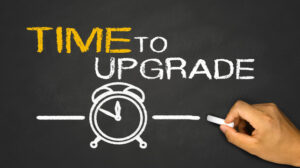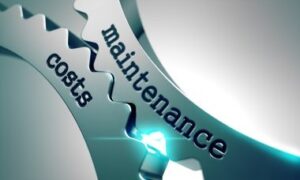The first hurdle in any digital transformation journey is to decide whether you want to build a solution in-house or to onboard a SaaS product. This blog is not about build-vs-buy decision and its implications. Thats for another day!
A ready-to-go, industry-leading SaaS product that helps faster time-to-market is sometimes the right option to choose. The in-house capabilities (or the sheer lack of it) might also favour a buy choice. No debates there!
However, here are the five things that could/would go wrong when you execute this incorrectly.
1. Getting carried away during product selection:

SaaS products are built to cater to multiple industries, verticals and varied use cases. They are modularized and typically presented as an ala-carte kind of offer where you are free to choose the modules you want to onboard (and pay for). By nature of their business models, the SaaS product’s sales team would try and upsell their offerings and more often than not, the clients take the bait!
The actual requirements could be a small subset of the product suite, but the way sales agents pitch, the lines between “needs”, “wants” and “luxuries” gets blurred! Sometimes companies completely mess up in their choice of investments because of the upselling.
“Ah, you might need this in future!”
“We offer this for a minor incremental cost now that will future proof you from spending more money later!”
“Other clients got hugely benefited by taking this approach!”
While what you would probably need is a two-wheeler to navigate around busy streets of your city, you may end up buying an expensive SUV that will help you in “future long drives when family expands”!
2. Customizations & resistance to change:

Any SaaS product would cater to 80% of the requirements and the remaining 20% should ideally be complemented through either process change or in-house complementary tools.
Having onboarded the SaaS product after months of evaluations and negotiations, companies tend to Mould the product (though product customization requests) to suit their current ways of working instead of going through a change management process.
“But we’ve always done it this way!”
“Our business operates differently!”
“These customizations are necessary to bring consistency across our different businesses!”
3. Not using the full functionalities provided by the product:

After having bought the best-in-class product and customizing it extensively, the companies end up not using the full product capabilities.
Old habits die hard, and one of the oldest habits of humankind is to extract data into an excel!
Despite all the amazing features, the “export to excel” and “import from excel” become the norm! Add Outlook to the mix and there is no looking back (into the product)!
4. Not prioritizing product version upgrades:

Every SaaS product has a stipulated window for version upgrades. Typically, twice a year or at least once a year. Depending on the major and minor versions, the SaaS providers ensure that their clients get on the bus with the mandatory upgrades. Some penalize their clients if they don’t follow mandatory upgrade cycles.
However, companies tend to ignore this in lieu of continually adding functionalities. Those take up priority than what seems like a boring product version upgrade!
“We have many priority features to release. This time of the year is critical!”
“What is the RoI of an upgrade… This doesn’t seem to stack up!”
“We can combine all the upgrades into one cycle. Let’s not burn the ocean now!”
“What if this upgrade doesn’t work. We don’t have confidence!”
5. Normalizing the spend on maintenance costs:

After having spent more than required dollars in onboarding a SaaS product; customizing it enough to match the “as-is” process flows; not knowing how to use the full functionalities of the product; and not following the regular product version upgrade cycles; the final nail in the coffin is to engage “specialist” partners who help support the older version of the products!
These specialist SI partners, offer to tie up with the SaaS providers to offer these specialty services at an attractive price to maintain the versions that are unsupported by the parent SaaS provider.
Instead of going for a new car, you engage a “trusted and certified” car servicing company that specializes in servicing old cars at an “attractive & discounted” price!
It’s a double whammy! On one hand, you bleed by paying the car servicing company to fix the cranking engine noise of an aging car; and on the other, you bleed by having to make do with the manual infotainment system instead of the latest touch screen/ voice enabled infotainment that an upgrade would have otherwise offered!
Somewhere ages and ages hence, the leadership wakes up to realize that the best-in-class SaaS product they had once invested in is no longer serving its purpose and call the industry-leading consultants to “fix” the issues for them!
and guess what happens next!
No prizes for guessing that the whole cycle repeats itself! 🙂